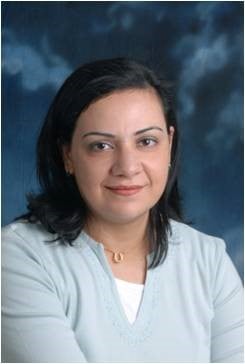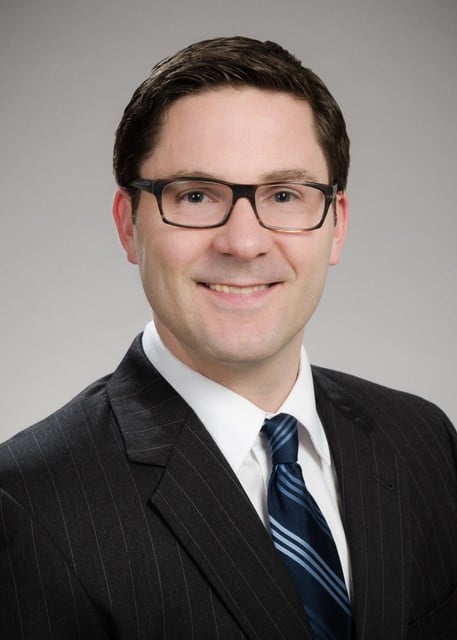Journal Club
In this feature, a panel of IDSA members identifies and critiques important new studies in the current literature that have a significant impact on the practice of infectious diseases medicine.
- Developing a Risk Prediction Model for Hospital-onset C. difficile Infection
- Lessons Learned from a Second HIV “Cure” Case
For a review of other recent research in the infectious diseases literature, see “In the Literature,” by Stanley Deresinski, MD, FIDSA, in each issue of Clinical Infectious Diseases.

Developing a Risk Prediction Model for Hospital-onset C. difficile Infection
Reviewed by Zeina A. Kanafani, MD, MS, FIDSA
Despite the recognition of several risk factors for C. difficile infection (CDI) and the implementation of antimicrobial stewardship programs, many hospitalized patients remain at risk for developing CDI. In a recent retrospective case-control study published in the American Journal of Infection Control, the authors aimed to develop a risk prediction model consisting of elements that can be easily assessed upon hospital admission.
The study was conducted at two tertiary care centers in North Carolina and included adult patients who were hospitalized between 2015 and 2017. Cases were patients with hospital-onset CDI based on clinical signs and symptoms and a positive C. difficile PCR test ³ 48 hours after admission. Controls were patients without CDI and were matched to cases on a 1:1 ratio based on hospital ward type (critical care or medicine).
There were 200 patients included in the study, consisting of 100 cases and 100 controls. Several risk factors were found to be statistically different among cases and controls, but only age ≥ 70 years and hospitalization in the past 90 days could be used in the prediction model since they were evaluable at admission. Based on the strength of the association in the multiple regression model, age ≥ 70 years was given a score of 2 and hospitalization in the past 90 days was assigned a score of 4. A score of ≥ 2 was associated with the highest accuracy (63 percent). It is noteworthy that in-hospital mortality was significantly higher among cases than controls.
The authors conclude that this easy-to-use risk prediction model can help identify, upon admission, hospitalized patients who are at high risk for developing CDI.
(Tilton and Johnson. Am J Infect Control. 2019;47(3):280–284.)
 Lessons Learned from a Second HIV “Cure” Case
Lessons Learned from a Second HIV “Cure” Case
Reviewed by Brian R. Wood, MD
Research in the HIV field doesn’t make international headlines every day. The recent report of a second case of sustained HIV remission following allogeneic hematopoietic stem cell transplant (allo-HSCT) deserves attention. What lessons can be learned?
In a research letter published in Nature, investigators describe a gentleman (now known as the “London patient”) diagnosed with HIV in 2003 who started antiretroviral therapy (ART) in 2012, then was diagnosed with stage IVB Hodgkin’s lymphoma (HL) later that year. The HL was refractory to first-line and salvage chemotherapy, and mobilization of autologous peripheral blood stem cells failed, so he underwent allo-HSCT from an unrelated donor who, importantly, was homozygous for the CCR5∆32 mutation; this mutation eliminates entry of CCR5-tropic HIV into CD4 T-cell lymphocytes (and the host patient’s HIV was CCR5-tropic only). The allo-HSCT led to remission of HL. By day 30, full donor chimerism was documented. Researchers also identified loss of CCR5 surface expression in host CD4 and CD8 T-cell lymphocytes, and the patient’s genotype converted from CCR5 wild type/wild type (wt/wt) to CCR5∆32/∆32.
The patient interrupted ART on day 510 post-transplant. He has now been off ART approximately 18 months, with evidence of sustained HIV remission based on HIV RNA levels below 1 copy/mL, undetectable HIV DNA levels in peripheral CD4 lymphocytes, no reactivatable HIV on quantitative viral outgrowth assays, no HIV-1 specific gag cell response in T lymphocytes, and declining HIV-1 specific antibody levels.
While investigators cautiously use the term “remission” instead of “cure,” they highlight important lessons from this case when compared to the “Berlin patient” (who now has sustained HIV remission for more than a decade following allo-HSCT). For example, the current patient experienced HIV remission using a somewhat less toxic intervention — reduced intensity conditioning, no total body irradiation, and one allo-HSCT instead of two. Other key differences include this patient had HL, whereas the Berlin patient had acute myeloid leukemia, and this patient was homozygous CCR5wt/wt pre-HSCT, as opposed to heterozygous CCR5wt/∆32.
Another recent report describes sustained HIV remission 4 months after allo-HSCT from a CCR5∆32 homozygous donor in the “Düsseldorf patient.” However, a prior study documented HIV viral rebound post-HSCT from CCR5 wild-type donors, and rebound also occurred post-HSCT in a recipient with pre-existing minority CXCR4 variants (the “Essen patient”). These cases signify that sustained HIV remission is possible with modification of the CCR5 coreceptor in certain individuals (such as those with full CCR5 tropism pre-intervention who achieve complete CCR5∆32 chimerism post-intervention). We need CCR5-targeted treatments that are simpler and more readily accessible, but lessons learned from these cases will propel the field towards that goal.
(Gupta et al. Nature. Published online: March 5, 2019.)

